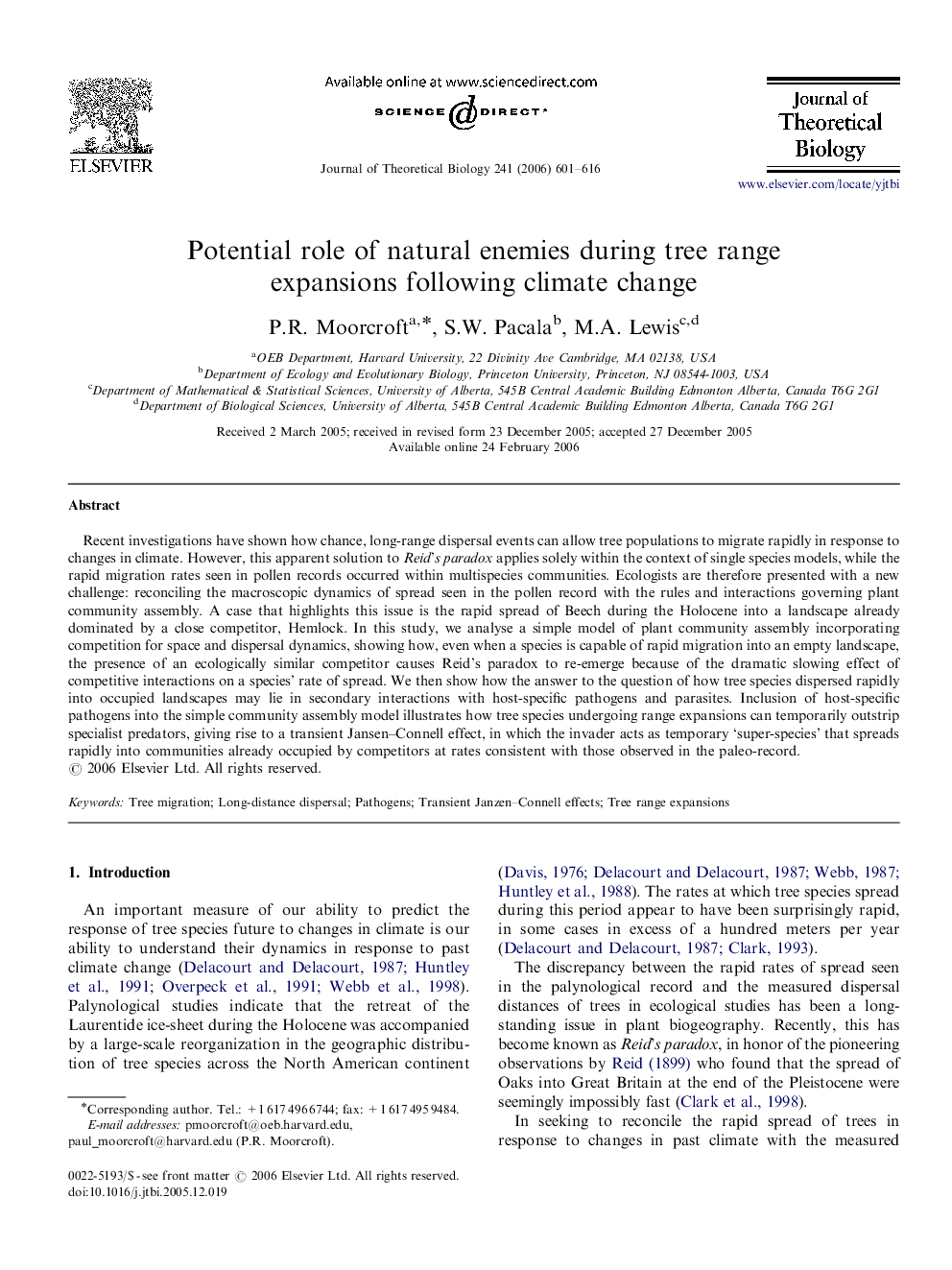| Article ID | Journal | Published Year | Pages | File Type |
|---|---|---|---|---|
| 4499411 | Journal of Theoretical Biology | 2006 | 16 Pages |
Recent investigations have shown how chance, long-range dispersal events can allow tree populations to migrate rapidly in response to changes in climate. However, this apparent solution to Reid’s paradox applies solely within the context of single species models, while the rapid migration rates seen in pollen records occurred within multispecies communities. Ecologists are therefore presented with a new challenge: reconciling the macroscopic dynamics of spread seen in the pollen record with the rules and interactions governing plant community assembly. A case that highlights this issue is the rapid spread of Beech during the Holocene into a landscape already dominated by a close competitor, Hemlock. In this study, we analyse a simple model of plant community assembly incorporating competition for space and dispersal dynamics, showing how, even when a species is capable of rapid migration into an empty landscape, the presence of an ecologically similar competitor causes Reid's paradox to re-emerge because of the dramatic slowing effect of competitive interactions on a species’ rate of spread. We then show how the answer to the question of how tree species dispersed rapidly into occupied landscapes may lie in secondary interactions with host-specific pathogens and parasites. Inclusion of host-specific pathogens into the simple community assembly model illustrates how tree species undergoing range expansions can temporarily outstrip specialist predators, giving rise to a transient Jansen–Connell effect, in which the invader acts as temporary ‘super-species’ that spreads rapidly into communities already occupied by competitors at rates consistent with those observed in the paleo-record.
